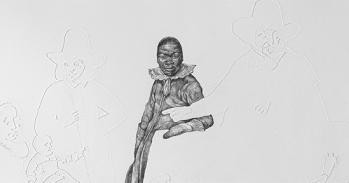
Cars, art, wine and watches: emotional assets are becoming an increasingly popular alternative to traditional investments. But while the returns may be good, it is not without its challenges.
Cars, art, wine and watches: emotional assets are becoming an increasingly popular alternative to traditional investments. But while the returns may be good, it is not without its challenges.
Investors might hold onto these emotional assets for 40 years, the infrequency with which these assets are traded reflects the costs of trading them
Elroy Dimson
In 2008 Jon Hunt bought a car, kept it for the following three years as an investment and then sold it in 2011 at a profit. So far, so ordinary. However, Jon is founder of Foxton’s Estate Agency, one of the largest in the UK, and the car he bought was a Ferrari GTO 250, one of just 39 that were produced between 1962 and 1964. The price he paid in 2008 was a whopping, and record-breaking, £15.7m. And the profit? A cool £4.5m.
This extraordinary deal is one of the best examples of a growing trend towards alternative investments. Since the financial crisis of 2008 left stock markets jittery and the real estate market depressed, alternative investments, especially beautiful objects with an emotional dimension such as works of art, wine, musical instruments, jewellery, watches and, of course, cars are growing rapidly.
According to the 2020 Foresight Report: Luxury Investments Since 2007, an increasing number of high net worth individuals (HNWIs) are expressing an interest in emotional investments. Indeed, investments by American HNWIs were valued at US$118bn (£71bn) in 2012; more than half of all Chinese millionaires opted for such investments.
Clearly, emotional assets have an obvious appeal beyond being simply a refuge from equities, bonds and gilts during difficult economic times – you can hang them on a wall and play, drink or drive them. They look beautiful, they’re glamorous and they have a distinct curiosity value.
But while the returns might be attractive, and the lack of correlation with conventional investments also appealing, anyone thinking about making their passion a serious investment traditionally had to consider two main issues, says Professor Elroy Dimson, co-director of the Centre for Endowment Asset Management (CEAM) at Cambridge Judge.
“While the long-run returns on these collectibles have been superior to the total return from assets such as gold, government bonds and Treasury bills,” he says, “their relative illiquidity, and difficulties over valuation, mean that they are far from straightforward investments. Whereas equities are traded every day, investors might hold onto these emotional assets for 40 years, the infrequency with which these assets are traded reflects the costs of trading them.”
Creative solutions are required, and pooled investment funds are increasingly becoming an important part of the market. Rather than buying a painting or a number of cases of wine, investors can now buy into joint funds, thereby spreading their risk and making disposal easier.
According to the 2012 Deloitte report Investing in Château Lafite, Picasso or Patek Philippe – The Rise of Collectible Assets, there were then “44 art funds and art investment trusts in operation in countries such as Luxembourg, the United States, Singapore and Switzerland. Many more are waiting in the wings.” Over recent years other specialist funds focussing on wine, watches and cars among other assets have been launched. As well as offering a potentially lower risk entry into this market, these funds offer access to a broader range of investors, as the rise of platforms to trade “shares” in art, such as My Art Invest, testifies.
Of course, emotional assets increase in value in a less logical way than many other investments. “A very old wine might be undrinkable but people might still value it as a collectible, and therefore there are opportunities to invest in it,” says Professor Dimson. Storage is another issue that needs to be addressed. “You can store a work of art by hanging it on the wall or you can put it into storage. But if you put a violin into storage it will deteriorate. It needs to be played, and so some investors in musical instruments choose to lend the violins they own to violinists for nothing.”
The challenges of valuation against a background of changing taste, fashion and trends are increasingly significant, as the prices of these assets rise and interest in them among investors increases. “However, today we have more tools for accurate valuation than we did, say, a decade ago,” says Dr Anna Dempster of the Sotheby’s Institute of Art, a winner of the Emerald/EFMD Outstanding Doctoral Research Award during her PhD in Management Studies at Cambridge Judge (1999-2004).
“Valuation is an area that has been very fragmented, with many of those who have research and insights, such as art historians, actuaries and investment analysts, speaking to each other from different perspectives,” she says. But as collective funds are providing a solution to illiquidity issues, Dempster believes bringing disparate art experts together could have a similar impact on valuation techniques.
“Beauty is in the eye of the beholder, and we are in the business of the unique,” she says. “However, the more market transparency there is, the more valuation becomes objective. Technology is making the art market ever more transparent with information about prices and transactions increasingly widely available.”
Dimson agrees. “Valuation can be on a systematic basis,” he says. “Hedonic pricing [where price is determined statistically from characteristics of the goods being sold and external factors affecting them] and pricing on the basis of comparables – two techniques used in equity and real-estate markets – are now in widespread use among valuers.”
So, thanks in part to the increasing availability of more objective valuation and the growth of pooled investment funds, the interest in emotional investments is increasing:
“This is the area in which very wealthy people have a big impact,” says Dimson. “If the global economy prospers and income-inequality accelerates, then we can anticipate increasing financialisation of high-end collectibles.”
The text in this work is licensed under a Creative Commons Licence. If you use this content on your site please link back to this page. For image rights, please see the credits associated with each individual image.





